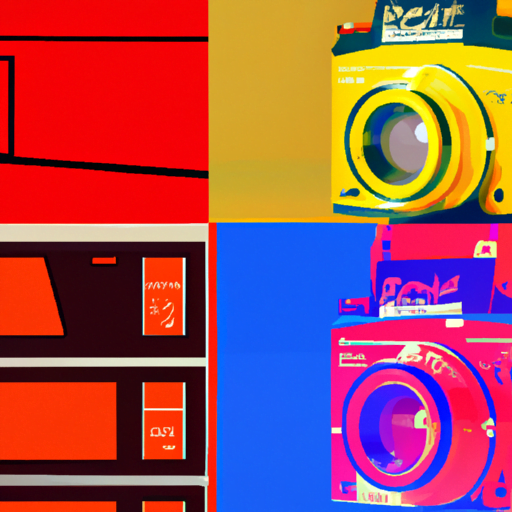
-
Table of Contents
- The Future of Print Design in the Digital Age
- The Relevance of Print Design
- The Challenges of Print Design in the Digital Age
- The Opportunities for Print Design in the Digital Age
- Case Studies: Successful Print Design in the Digital Age
- 1. IKEA Catalog
- 2. National Geographic Magazine
- 3. Coca-Cola’s “Share a Coke” Campaign
- Summary
The Future of Print Design in the Digital Age

In today’s digital age, where technology is rapidly advancing and the internet has become an integral part of our lives, many have questioned the future of print design. With the rise of digital media and the convenience it offers, it is easy to assume that print design may become obsolete. However, print design continues to hold its ground and even thrive in certain areas. In this article, we will explore the future of print design in the digital age, examining its relevance, challenges, and opportunities.
The Relevance of Print Design
Despite the dominance of digital media, print design remains relevant and continues to play a significant role in various industries. Here are a few reasons why print design is still important:
- Tactile Experience: Unlike digital media, print design offers a tactile experience that engages multiple senses. The feel of a well-designed brochure or the texture of a high-quality business card can leave a lasting impression on the recipient.
- Permanence: Printed materials have a physical presence that digital media lacks. They can be displayed, collected, and referenced at any time without the need for an internet connection or device.
- Targeted Marketing: Print design allows for targeted marketing efforts. For example, direct mail campaigns can reach specific demographics or geographic areas, ensuring that the message reaches the intended audience.
- Brand Identity: Print design plays a crucial role in establishing and reinforcing a brand’s identity. Logos, packaging, and other printed materials contribute to the overall brand experience and help create a memorable impression.
The Challenges of Print Design in the Digital Age
While print design continues to have its merits, it also faces several challenges in the digital age. These challenges include:
- Cost: Print design can be expensive, especially for small businesses or individuals with limited budgets. Printing, distribution, and storage costs can add up quickly, making it less accessible for some.
- Environmental Impact: The production of printed materials can have a significant environmental impact. The use of paper, ink, and energy in the printing process contributes to deforestation, pollution, and carbon emissions.
- Competition from Digital Media: With the rise of digital media, print design faces stiff competition for attention and resources. Many businesses and individuals are shifting their focus and investments towards digital platforms.
- Technological Advancements: Technology is constantly evolving, and print design must adapt to keep up. Incorporating interactive elements, augmented reality, or QR codes into print materials can help bridge the gap between print and digital.
The Opportunities for Print Design in the Digital Age
While print design faces challenges, it also presents opportunities for innovation and growth. Here are some ways in which print design can thrive in the digital age:
- Integration with Digital Media: Print design can complement digital media by providing a tangible extension of online experiences. For example, a magazine may include QR codes that lead readers to additional online content or interactive features.
- Personalization: Advances in printing technology have made it easier and more cost-effective to personalize printed materials. Variable data printing allows for customized content, making print design more relevant and engaging for recipients.
- Specialty Printing: Print design can leverage specialty printing techniques to create unique and memorable experiences. Techniques such as embossing, foil stamping, and die-cutting can add a touch of luxury and exclusivity to printed materials.
- Niche Markets: While digital media caters to a broad audience, print design can target niche markets that appreciate the tactile and aesthetic qualities of printed materials. Art books, limited edition prints, and high-end packaging are examples of print design thriving in niche markets.
Case Studies: Successful Print Design in the Digital Age
Several case studies demonstrate the successful integration of print design in the digital age. These examples highlight the effectiveness of print design when combined with digital media:
1. IKEA Catalog
The IKEA catalog is a prime example of print design’s continued relevance. Despite the availability of online catalogs, IKEA continues to produce and distribute millions of printed catalogs worldwide. The catalog serves as a tangible representation of IKEA’s brand and allows customers to browse and plan their purchases offline.
2. National Geographic Magazine
National Geographic Magazine is renowned for its stunning photography and captivating storytelling. While the magazine has a digital presence, the print edition remains highly sought after. The tactile experience of flipping through the pages and the high-quality printing contribute to the magazine’s appeal.
3. Coca-Cola’s “Share a Coke” Campaign
In 2011, Coca-Cola launched the “Share a Coke” campaign, which featured personalized labels with popular names. This campaign revitalized the soda giant’s sales and generated significant buzz. By leveraging print design and personalization, Coca-Cola created a unique and memorable experience for its customers.
Summary
While the digital age has undoubtedly impacted the print design industry, it is clear that print design still has a place in today’s world. The tactile experience, permanence, targeted marketing, and brand identity offered by print design continue to resonate with audiences. However, print design must adapt to the challenges posed by cost, environmental impact, competition from digital media, and technological advancements.
By integrating with digital media, personalizing content, leveraging specialty printing techniques, and targeting niche markets, print design can thrive in the digital age. Successful case studies such as the IKEA catalog, National Geographic Magazine, and Coca-Cola’s “Share a Coke” campaign demonstrate the effectiveness of print design when combined with digital strategies.
Ultimately, the future of print design lies in its ability to evolve and innovate, embracing the opportunities presented by the digital age while staying true to its unique qualities. As technology continues to advance, print design will continue to find its place, offering a tangible and memorable experience in a world dominated by digital media.
